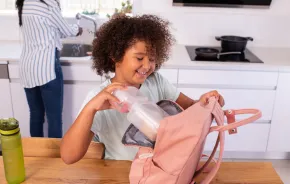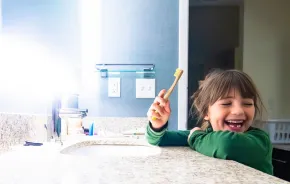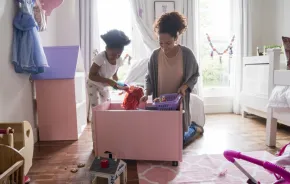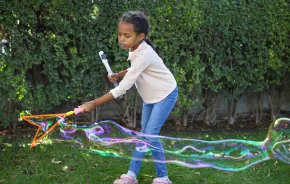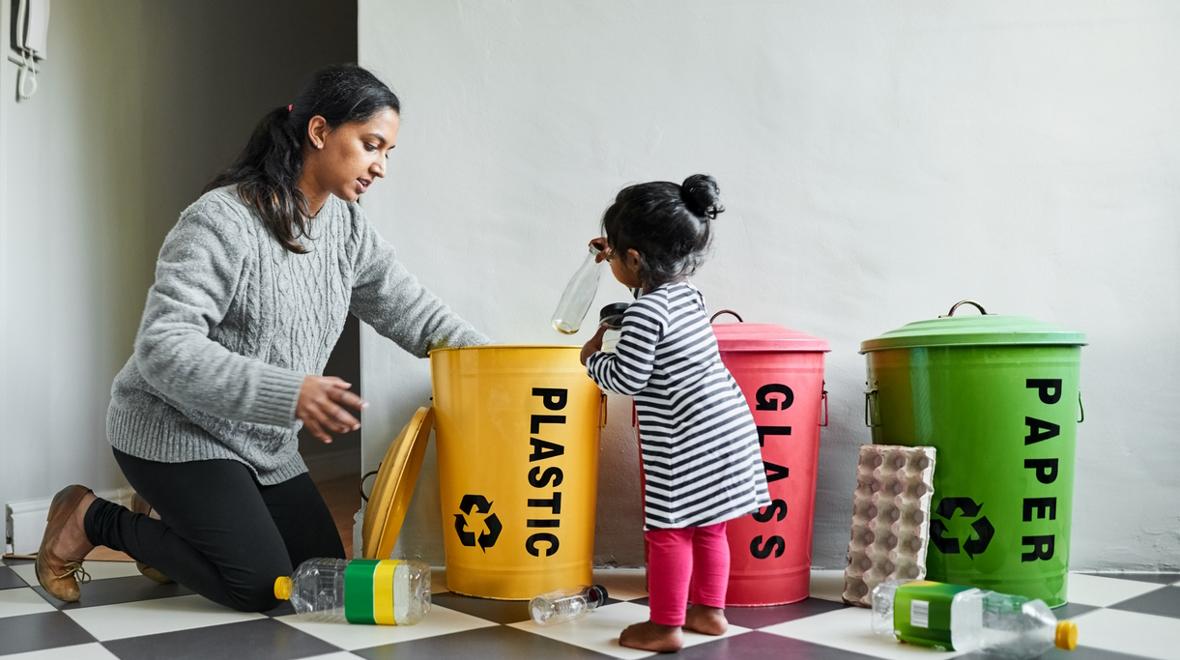
The Environmental Protection Agency estimates that Americans throw away almost five pounds of garbage per person per day. Realizing just how much waste we generate makes us want to do something about it. Fortunately, some changes that only require a little bit of effort can translate into big benefits for the planet, for your wallet — and even for your community.
Food waste
Believe it or not, the average American wastes 400 pounds of food every year. That’s something we can’t afford — financially or ecologically.
There are plenty of ways to cut down on food waste, from avoiding spoilage through proper food storage to getting creative with leftovers. But the single most effective strategy for most of us is planning ahead.
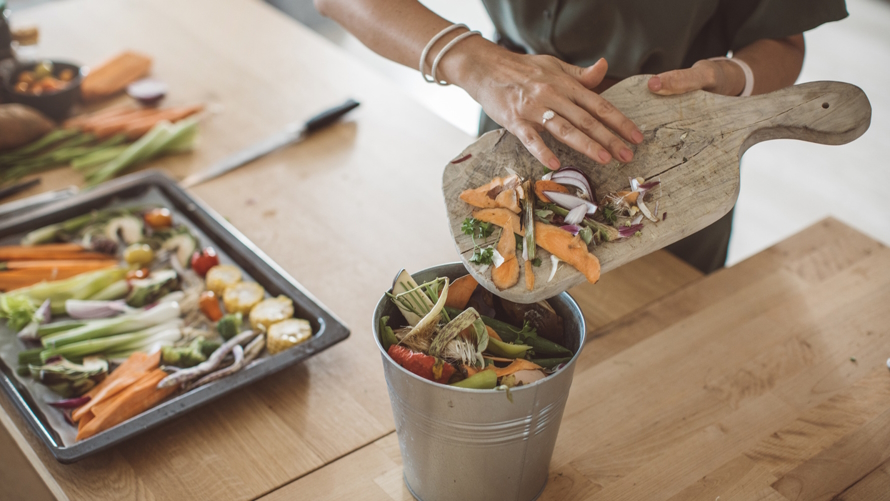
Yes, it takes some effort up front to analyze your schedule for the week, plan what you’ll make with the time you have each day and prep a grocery list around those meals. But shopping from a list based on a meal plan eliminates impulse buying, aspirational shopping (do you actually have time to make scratch lasagna this week?) and accidental duplicate purchases.
Consider ordering your groceries online for delivery or pickup — this practice not only saves time, it can be a more sustainable way to shop, especially if the store allows you to return the bags. Try it for a couple of weeks and you might be surprised by how much money you save and how much less food you throw away. Not to mention how much stress you avoid by eliminating the “What am I going to make for dinner?” conundrum from your daily routine.
Plastic waste
If you dump out your garbage bin and spread out its contents (maybe a raccoon has done it for you?), it’s immediately obvious that a lot of it is plastic. Plastics make up 12 percent of the waste stream, and that’s not even counting the 8 million tons of plastic that wash into the oceans every year. Plastic contains harmful chemicals that can leach from food containers, teethers and toys; and microplastics are entering the food chain from the environment. These exposures are linked to cancers, birth defects, impaired immunity, endocrine disruption, and developmental and reproductive effects.
Plastic is so ubiquitous that living plastic-free is impossible for most people, especially if you have small children. But there are some easy ways to use less of it.
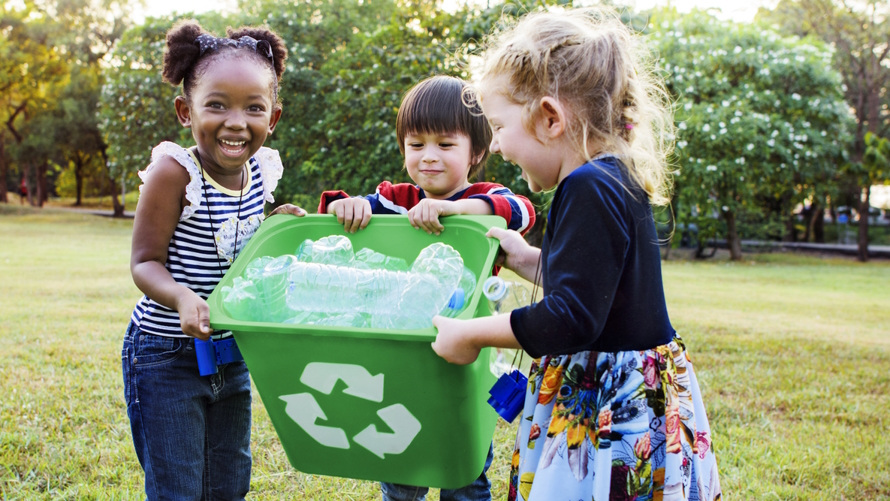
Most people already have reusable shopping bags scattered around the house, but if you don’t, start collecting them. Find a convenient storage place for them so you remember to take them with you when you go shopping. Keep spares in your car, just in case.
Assign everyone in the family their own refillable water bottle (and coffee to-go mug for parents) to eliminate disposable beverage containers. Take a proper lunch box to work; there are lots of very grown-up options these days, and many are designed to eliminate the need for disposable utensils and zip-close baggies. If yours is a simple container, you can still pack real utensils and reusable containers. (Just make sure they are dishwasher safe; nobody has time to handwash lunch box components.)
Cutting down on plastic is an iterative process; look for reusable and recyclable alternatives, one product at a time, as your energy and resources allow. Cutting down on plastic waste takes real effort, but the environmental and health benefits are worth it.
Textiles and toys
Fast fashion and cheap toys have a tremendous ecological footprint at every stage of life, with 85 percent of textiles and 80 percent of toys winding up in a landfill. That knowledge might make it easy to abandon your inner mall rat, but growing kids give a whole new meaning to the “fast” in fashion. That’s okay, you can still cut down on textile and toy waste.
Does your middle schooler ignore their well-curated wardrobe and wear the same sweatshirt every day? Call it a win for the planet. You have permission to stop buying your kids clothes until they actually need them — that is, their old clothes are worn out or nothing fits. Letting kids love their clothes to death saves money, requires no effort on your part and is gentle on the environment.
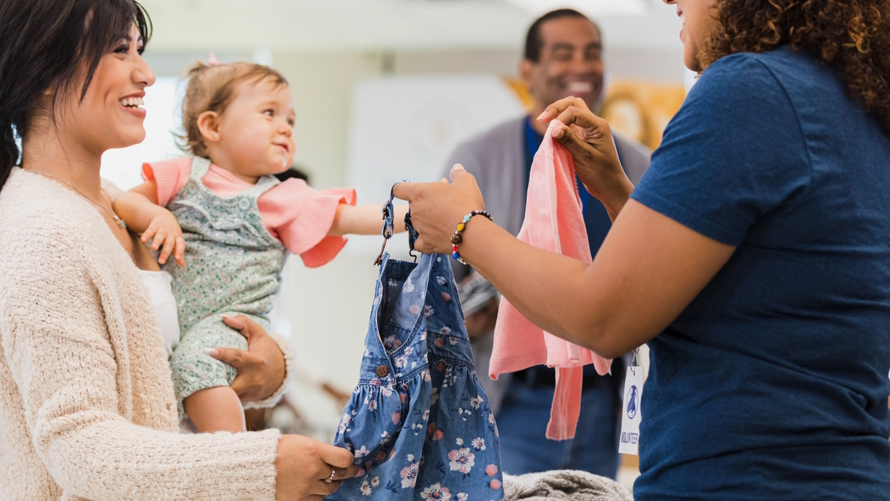
For the clothes you do buy, establish a circular clothing economy. If you grew up resenting your sibling’s hand-me-downs, expand the circle. Getting a pile of clothes from an older cousin or the cool big kid down the block has a completely different vibe. When my kids were little, we got together with another family for clothing exchanges. Many of my oldest child’s clothes came back to my youngest five years later, covered in a patina of nostalgia and no worse for being worn by the other family’s two kids. Likewise, parents can hold a free swap meet with friends. Everyone places clothes they don’t want on tables in the backyard and browses each other’s offerings.
The hand-me-down chain is an effective strategy for toys, too. In my experience, kids are a lot more likely to relinquish a formerly beloved toy if they know it’s going to a good home instead of the trash. If your friend group or neighborhood doesn’t include other kids of corresponding ages to yours, you can use your school’s Facebook page to post offerings and requests. Platforms like Freecycle and Buy Nothing can also be used for neighborly exchanges to lengthen the lifespan of outgrown objects.
Bigger stuff
If Marie Kondo is right that clutter causes stress, we would all breathe a little easier by owning less stuff. We know we shouldn’t buy things we don’t need, but what about things we need once or infrequently? Does every house really need its own pressure washer? How about a circular saw? A lot of people buy these items because it’s just as expensive to rent them. But consider a third option: borrowing them.

Tool libraries, like the one operated by the Phinney Neighborhood Association, are always cheaper than a trip to the hardware store. You can look online for one near you, but much less formal arrangements can help you get the job done while building community. Neighbors used to borrow a cup of sugar — why not expand the concept to share Instant Pots and bread-makers?
Every neighbor on a street doesn’t need to own a snow shovel in a town that only gets snow once or twice a year. Lots of people would be happy to share their lawnmower with a borrower who sometimes mows both lawns. On my street, an email distribution list originally formed to organize the annual block watch party helps neighbors share seldom-used items, such as shovels and ladders. You could even use Google Sheets to set up a shared spreadsheet on which neighbors list items available for loaning. Saving money when you borrow your neighbor’s carpet cleaner feels almost as good as being able to help out by loaning them your weed whacker.
The best benefit of the sharing economy might actually be the emotional boost felt from helping each other out.
More ways to go green |
Editor’s note: This article was first published in 2022 and has been updated for 2024.








